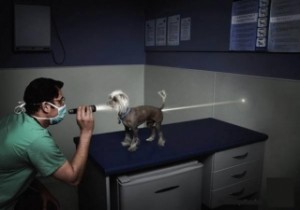Many pet owners tell us they fear anesthesia because they lost a pet during what should have been a routine operation. They may also have heard stories from well meaning friends about the risks of “going under”.
At Advanced Veterinary Dental Surgery, we understand this concern.
 The fact is: Anesthesia is a tool. Some tools can be big, scary and even dangerous if used improperly.
The fact is: Anesthesia is a tool. Some tools can be big, scary and even dangerous if used improperly.
When used properly anesthesia is invaluable for providing the best oral health care for dogs and cats.
When our patients are calm and comfortable under general anesthesia, we are able to:
- perform a complete exam of the oral cavity without causing pain to your pet
- probe for hidden disease that might be overlooked with just a “quick peak”
- perform dental radiographs
- perform the necessary treatment for oral disease
- keep you, our doctor and support staff safe
- reduce the long term cost of pet care
How do we use anesthesia properly?
 By monitoring our patients closely BEFORE, DURING and AFTER their surgery.
By monitoring our patients closely BEFORE, DURING and AFTER their surgery.
Pre-surgical examination– the overall health of your pet is determined by reviewing the medical history; listening to the heart and lungs, and feeling for lumps and bumps inside and outside the body. We also check your pet’s vital signs and blood work. The purpose of all this poking and prodding is to predict the risk of anesthesia.
Before a pet is placed under anesthesia, we look at these important risk factors:
- the age, breed, and size of your pet,
- the nature and severity of your pet’s pre-existing medical conditions,

- the availability of anesthetic drugs or equipment your pet will need,
- the skill and experience of the surgical team (our doctor, anesthesia providers and assisting staff),
- availability of emergency equipment and medications,
- the nature and severity of the operative procedure,
- duration of surgery or anesthesia,
- the level of post-operative care your pet will need
During anesthesia, we monitor your pet.
This is an active job that requires special knowledge, decision making skills, and focused attention to your pet’s vital signs.
Normal ranges for vital signs
Heart rate |
|
Blood Pressure |
|
Exhaled Carbon Dioxide – (waste gases from the lungs) |
|
Body Temperature |
|
Breathing Rate |
|
Blood Oxygen Level |
|
After the surgery is complete, patient monitoring continues into the recovery room.
Our team measures many of the same vital signs and checks the level of discomfort or confusion your pet may be experiencing at this time.
Why is AVDS different?
- Each pet has a dedicated technician monitoring anesthesia. The technician does not divide her attention between patient safety and performing the dental procedure.

- Each pet gets a dental cleaning, charting and radiographs performed by the doctor.
- The entire surgical procedure is performed by the doctor.
- Each pet gets customized care including pain management.
- Each procedure is performed with sterilized surgical instruments, sterile IV catheters and fluids. There is no sharing of materials between patients. This reduces the risk of spreading infections from one patient to another.







